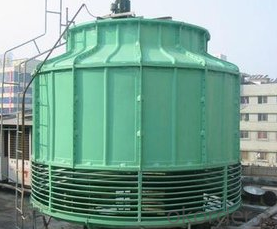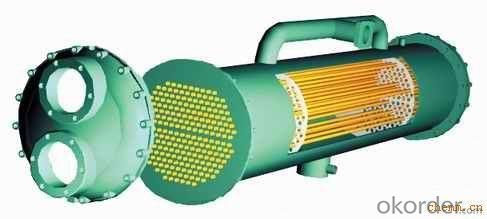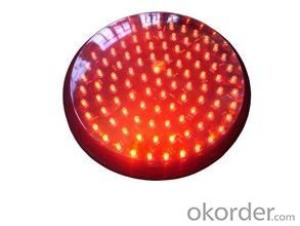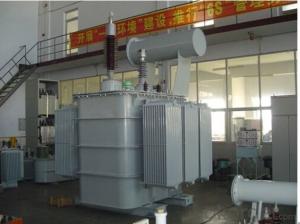Heat Exchanger in Chemical Industry/ El Intercambiador de Calor en La Industria Química
- Loading Port:
- Nanjing
- Payment Terms:
- TT OR LC
- Min Order Qty:
- 10 set
- Supply Capability:
- 100 set/month
OKorder Service Pledge
OKorder Financial Service
You Might Also Like
In industrial production, in order to meet the demands of industrial process, often need to undertake a variety of different ways of heat transformation, such as: heating, cooling, evaporation and condensation, heat exchanger is used to realize the heat exchange and transmission equipment.Through a variety of equipment, while the heat from high temperature fluid is passed to the low temperature of fluid, to meet the needs of the production process.Heat exchanger is widely used in plastic heat exchanger is a kind of strong corrosion resistance, fluorine plastic heat exchanger made first in 1965 by the United States Dupont company success and implements the commercialized.Our country also invested a lot of money and manpower committed to the development of fluorine plastic heat exchanger, zhengzhou university of technology in 1985 successfully developed "teflon (hereinafter referred to as a 4) F tube plate limit expansion pressure heating welding process, solves the fluorine plastic tube to tubesheet connection of key technology.Subsequently, domestically produced various types of fluorine plastic heat exchanger are put into actual production application and achieved good effect.Currently, fluorine plastic heat exchanger by manufacturers from a single on-demand production and development to the enterprise standard control of the modular design of series production.The traditional heat exchanger compared with fluorine plastic heat exchanger has many differences.Such as common metal heat exchanger with easy to corrosion and heat transfer coefficients by defects such as dirt layer thickness varies: made of nonmetal materials such as heat exchanger is fragile, bulky, and low efficiency of defects;With you, the heat exchanger of rare metal materials because of its expensive to popularization and application.While fluorine plastic heat exchanger can make up for the defects in large extent.Ceng heater, a heat exchange device, can also be called heat exchanger (heat exchanger), the "heater" gas not electricity, connection on the heating pipe, heating temperatures of hot water and tap water in heat exchange equipment inside, can be continuous use of hot water.

FAQ
We have organized several common questions for our clients,may help you sincerely:
①How about your company?
A world class manufacturer & supplier of castings forging in carbon steel and alloy steel,is one of the large-scale professional investment casting production bases in China,consisting of both casting foundry forging and machining factory. Annually more than 8000 tons Precision casting and forging parts are exported to markets in Europe,America and Japan. OEM casting and forging service available according to customer’s requirements.
②How to guarantee the quality of the products?
We have established the international advanced quality management system,every link from raw material to final product we have strict quality test;We resolutely put an end to unqualified products flowing into the market. At the same time, we will provide necessary follow-up service assurance.
③How long can we receive the product after purchase?
In the purchase of product within three working days, We will arrange the factory delivery as soon as possible. The pecific time of receiving is related to the state and position of customers.Commonly 7 to 10 working days can be served
- Q: and how does its work?
- It will basically provide safety protection from electrical shock. Occassional large electrical equipment may become temporarily energized --- maybe a down power line, or by accident. By grounding the equipment, the earth that you are standing on, and the equipment will always be at the same voltage. Therefore, even if the equipment becomes energized at 25000 Volts, the ground you are standing on will be at 25000 volts as well. So there is no potential difference and therefore, no electrical shock. Without the earth connection --- there would be a 25000 Volt potential difference, and you would suffer severe electrical shock, or even death. Excerpt from Wikipedia: Ground or earth in a mains (AC power) electrical wiring system is a conductor that provides a low impedance path to the earth to prevent hazardous voltages from appearing on equipment (the terms ground (North American practice) and earth (most other English-speaking countries) are used synonymously here). Normally a grounding conductor does not carry current. Neutral is a circuit conductor (that carries current in normal operation), which is connected to earth (or ground) generally at the service panel with the main disconnecting switch or breaker.
- Q: I mean everything from the boat, the nets for the traps the traps themselves, the electrical equipment, and the salary for the crew. Are the crews wages expense or are they earning a share of the final pot like the owners and partners.
- I'd actually inquire with a crab fisherman. Call a dock or something, seem if someone is willing to chat.
- Q: I am wondering what happens when you have accidentally connected the negative cables to positive and the positive cables to negative. I have boat that has to two marine batteries and i am wondering if you were to do this will it screw things up and break things?
- Hmmmm The only approach to comprehend for sure if that fried the the circuits could be to check out it out with the proper adapter. I would now not use the adapter with the overrated voltage, why danger it extra? Just take the one you firstly used, reduce the output cable and splice the wires collectively the opposite method to reverse the polarity of the plug. That would clear up your main issue.
- Q: Especially from the U.K? I wanted to buy some weighing scales for like ?6, cos like I noticed you can resell them over here in the U.K for like ?50, or are these fake?
- the us is in a recession; NOTHING should be bought from China. also, China is a COMMUNIST nation.
- Q: I want to know some information about electrical engineering
- The electrical engineering comes from any fault from electrical equipment or the information needed to set any electrical equipment. However the electrical engineering is not only limited to troubleshooting a fault but also invent the proper way to be set up. You can get a wide information about from our following websites
- Q: i am in college and my friend tried to explain his major in electrical engineering but i am not completely sure what an electrical engineer does.
- Involved with generation, transmission and distribution of electricity, use of electrical equipment like furnaces, motors etc. Repair of machines, Design of electrical equipment etc.
- Q: I just replaced a light fixture in an apartment complex.I discovered that the bonehead that did the install did not run an equiptment ground when he installed the entire circuit that the light is ran off of (dumb a**!!!!!!!!)Does anyone know if it would be up to code if I where to just drive an 8 ft. ground rod and ground the fixture/entire circuit off of the rod?I have looked everywhere.Cannot find anything in code books.If someone knows where this is in NEC, please include the location.Anybody have any input?
- As mentioned the box may be grounded and you cannot see it. If it is not then you must ground it. There is code that will tell you the gauge of the wire that you must use for each circuit. The new code indicates that you do not use a ground rod, but a ground plate. That plate must be buried deep enough that it is in damp soil or it will not work. I am not familiar with the plates, but with the ground rods you need to have more than one and they have to be separated. I have attached a link to the city of Concord code.
- Q: Hi, I was wondering if anyone had any information on this car (specifically around a 2003 model) because I was planning to purchase one. From searching on google all I could manage to find was that they were sturdy, safe cars that cost a lot to repair, which I figured since it's a mercedes. Thanks!
- its pretty cute, almost got one but I really love having 4 door. The back seats aren't as comfy (kinda a given for a coupe) but it looks hot, esp with the panorama roof and will probably be collectable as it was discountinued. as now will be the clk. watch out, a lot of them have cloth interior. If you're gonna drive a benz you better have leather!
- Q: I am interested in buying a house and the village water supply enters the house right next to the electrical panel in the basement. I am concerned that this might be a code violation and not pass inspection. Any thoughts?
- That location is alright for now. If you choose to have a service upgrade, then it'll have to be move atleast six ft away. Being close to the water main is good because the water system must be bonded to the service . When the panel is moved, then the meter location comes into play s far as disconnect means for the panel. Check out the NEC.
- Q: I just don't understand it, what does it mean when people say 3 phase or 2 phase Voltage, I know higher phases are used to power bigger more voltage demanding things but what does it mean?Can you get both AC and DC in each phase?Is phase just basically saying higher phase higher voltage for higher voltage equipment?How do you convert between phases?Are high phases created with the use of transformers or can they be created directly from things like wind turbines?What is the maximum and minimum phase?How does the phase effect the amps?
- Let me explain briefly about the Electric power source and what it has. We get electric power source normally from power station where it is produced by means of Electric power generators. The generator has an Armature which comprises three windings (say coil). Each winding has two ends and all these ends are connected with each other. From Armature windings 'THREE LINES' are drawn to transmit the Electric power source. {Power station produces very high voltage (Electro Motive Force) and transmit the source through over head lines to the various step down Transformers where it is finally step-ed down to low voltages ranging from 600 to 220 volts and supplied to us.} As said above the 'THREE LINES' that Carry's the electric power source from the power stations to us are said as THREE PHASES. VOLTAGE is the unit of the 'Electro Motive Force' (EMF) which is supplied to us from power sub station. What is 220 and 120 volt ? Power substation Supply power source to us by means of 4 wires where the three wires which are called Phases as said above and the fourth wire is called as Neutral. The phase wires carries power source where as Neutral wire carries no power source. America and other countries which follows American Standard, use a phase wire and a neutral wire for 120 volt Supply especially for lighting loads and two wires of phases are used for 220 volt Supply for appliances etc., If you measure the voltage between phases it will read 220volt and phase to neutral it will read 120 volt. Manufacturers of motors, home appliances, electrical equipments, etc., are the deciding authority to Communicate the voltage requirement of their PRODUCTS based on the way they made them. We can find this detail in the name plate of the equipment. Regarding AC and DC Supply. Batteries are made to Supply DC Supply and it can be used for AC equipments with suitable invert-or to change DC to AC.
Send your message to us
Heat Exchanger in Chemical Industry/ El Intercambiador de Calor en La Industria Química
- Loading Port:
- Nanjing
- Payment Terms:
- TT OR LC
- Min Order Qty:
- 10 set
- Supply Capability:
- 100 set/month
OKorder Service Pledge
OKorder Financial Service
Similar products
Hot products
Hot Searches
Related keywords




















